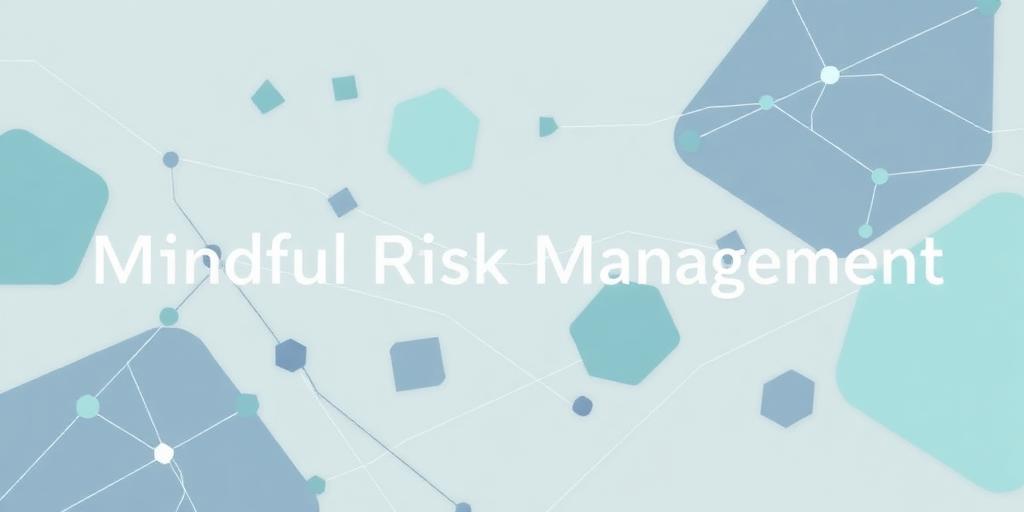Mindful Risk Management: Understanding, Accepting, and Navigating Uncertainty
In today's dynamic world, uncertainty is a constant. Whether in business, personal finance, or even daily life, understanding and managing risk is crucial for success and peace of mind. This post explores the concept of mindful risk management, providing a framework for understanding, accepting, and navigating the uncertainties that come our way.
What is Mindful Risk Management?
Mindful risk management is an approach that combines traditional risk management principles with mindfulness practices. It involves:
- Awareness: Recognizing and identifying potential risks.
- Acceptance: Acknowledging that uncertainty is inherent in life and business.
- Analysis: Evaluating the potential impact and likelihood of each risk.
- Action: Developing strategies to mitigate, transfer, or accept risks.
- Adaptation: Continuously monitoring and adjusting risk management strategies as circumstances change.
Unlike reactive risk management, which only addresses problems as they arise, mindful risk management is proactive and integrated into decision-making processes.
Why is Mindful Risk Management Important?
- Improved Decision-Making: By understanding the risks involved, you can make more informed decisions.
- Increased Resilience: Accepting uncertainty builds resilience to unexpected events.
- Reduced Stress: Proactive risk management reduces anxiety and stress associated with the unknown.
- Better Resource Allocation: Identifying and prioritizing risks allows for more efficient allocation of resources.
- Enhanced Opportunities: Understanding risk can reveal opportunities that might otherwise be overlooked.
Key Components of Mindful Risk Management
Risk Identification:
- Brainstorming: Gather stakeholders to identify potential risks.
- Historical Data: Analyze past experiences to identify recurring risks.
- Checklists: Use standardized checklists to ensure comprehensive coverage.
Risk Assessment:
- Qualitative Analysis: Assess the impact and likelihood of each risk (e.g., high, medium, low).
- Quantitative Analysis: Use data and statistical models to estimate potential financial losses.
- Prioritization: Rank risks based on their potential impact and likelihood.
Risk Mitigation Strategies:
- Avoidance: Eliminate the risk altogether (e.g., not entering a risky market).
- Reduction: Minimize the impact or likelihood of the risk (e.g., implementing safety measures).
- Transfer: Shift the risk to another party (e.g., insurance).
- Acceptance: Acknowledge the risk and prepare for its potential impact (e.g., contingency planning).
Monitoring and Review:
- Regular Audits: Conduct periodic reviews of risk management processes.
- Performance Indicators: Track key metrics to identify emerging risks.
- Feedback Loops: Establish mechanisms for gathering feedback from stakeholders.
Implementing Mindful Risk Management
- Start with Awareness: Cultivate a culture of risk awareness within your organization or personal life.
- Embrace Uncertainty: Accept that you cannot eliminate all risks, but you can manage them.
- Develop a Plan: Create a comprehensive risk management plan that outlines your approach to identifying, assessing, and mitigating risks.
- Communicate Openly: Foster open communication about risks and risk management strategies.
- Stay Flexible: Be prepared to adapt your risk management strategies as circumstances change.
Conclusion
Mindful risk management is an essential skill for navigating the complexities of the modern world. By understanding, accepting, and proactively managing risks, you can improve decision-making, build resilience, and create new opportunities. Embrace uncertainty and take control of your future through mindful risk management.









